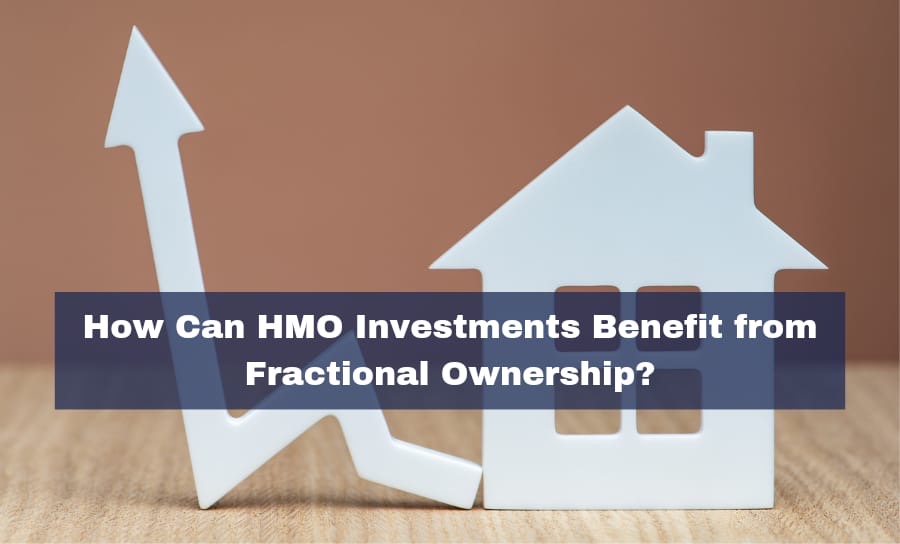If you're seeking a smart and lucrative
investment opportunity, look no further than Houses of Multiple Occupancy (HMOs). Recent and historical data reveal the undeniable allure of this market. According to the UK Office for National Statistics, rental prices have steadily increased by an impressive 20% over the past five years, with HMOs experiencing even higher demand.
With a growing population, soaring student enrollment, and a rising number of young professionals seeking affordable accommodation, HMOs offer a reliable stream of rental income. Moreover, HMOs often outperform traditional buy-to-let properties, boasting significantly higher rental yields. So, be the ace investor who recognizes the potential and reaps the rewards of this astute investment strategy.
In England, real estate experts predict that the HMO market will increase by £26 billion over the next few years. Good rental yields in HMOs can be generated either as a stand-alone investment strategy or with the aid of a Fractional Ownership portfolio.
However, HMO investors like landlords are held accountable for a lot of household flaws, such as maintenance and repairs of water and gas, etc. Still, landlords might enjoy flourishing returns and comforts unique to the field. Let's delve further into this topic!
What is HMO?

Houses with Multiple Occupation (HMOs) are typically residential properties that are rented out and inhabited by more than three tenants who are from different households. There are shared spaces, such as the kitchen, bathrooms, and living areas that need to be utilised by all households.
It can be likened to property owners acquiring real estate with the intention of leasing it out, but instead of traditional renting, the property is utilised as a co-living space accommodating multiple tenants. The location typically frequented by individuals in professional or academic pursuits.
HMOs, also known as multi-let or house shares, refer to properties where multiple tenants occupy individual rooms within the same dwelling. It provides additional features beyond those typically found in a
buy-to-let property.
The scope of mandatory HMO licensing has been extended since 2018 to include properties of any height that house 5 or more people in 2 or more separate households. This means that more landlords need to apply for a licence from their local council and comply with certain standards and conditions1.
The Electrical Safety Standards in the Private Rented Sector (England) Regulations 2020 came into force on 1 June 2020 and apply to all HMOs in England. They require landlords to ensure that the electrical installations in their properties are inspected and tested by a qualified person at least every 5 years, and to provide a copy of the report to their tenants and the local authority.
The Management of Houses in Multiple Occupation (England) Regulations 2006, which previously put specific duties on landlords around electrical safety, have been repealed and replaced by the new Electrical Safety Regulations.
The Renting Homes (Wales) Act 2016, may introduce a new legal framework for renting property in Wales, including HMOs. It will replace various types of tenancies and licences with two new types of occupation contracts: standard contracts and secure contracts. It will also introduce new rights and responsibilities for landlords and tenants, such as minimum property standards, fitness for human habitation, retaliatory eviction, etc.
What Makes HMO Investment More Popular Nowadays?

To better understand the situation, we have adapted data from the British Landlords Association (BLA), which shows large rental revenue from the HMO investment. Furthermore, the data shows that rental yields are approximately double when compared to buy-to-let investments.
According to the BLA research, HMOs generate an average rental yield of 7.5%, which is higher than the 3.63% found in the median buy-to-let investment. Furthermore, it is affected by the location and the rental market's ever-changing behaviour.
Now, let’s checkout some of the prominent reasons why HMO investment are setting the benchmarks these days.
As a knowledgeable investor, you must be enthusiastic about examining the key factors that make investing in Houses of Multiple Occupancy (HMOs) a prudent decision in the year 2023. Please equip your investment mindset and let us explore the numerous advantageous outcomes that lie ahead.
1. Enhanced Rental Yields:
Houses in Multiple Occupation (HMOs) exhibit superior rental yields by accommodating multiple tenants within a single property, resulting in increased cash inflow for property owners.
2. Increased Demand:
The demand for cost-effective housing is experiencing a significant surge, surpassing expectations. House of Multiple Occupancy (HMOs) offer a highly advantageous solution that appeals to a diverse tenant demographic, including students and young professionals, resulting in consistently high levels of occupancy.
Some recent updates
3. Diversification of Tenants:
By having multiple tenants, the potential impact of a property being unoccupied is mitigated. Even in the event of one tenant's departure, the remaining tenants continue to generate rental income, mitigating potential concerns and ensuring uninterrupted cash flow, thereby alleviating any potential sleep disturbances.
4. Inflation's Nemesis
Houses in Multiple Occupancy (HMOs) have the ability to effectively mitigate the impact of inflation. As rental prices increase, the corresponding returns on your investment also increase, enabling you to proactively mitigate the impact of rising costs.
5. Active Investment:
For the proactive investor, HMOs provide an opportunity for direct involvement and engagement. Take personal responsibility for property management and apply tender loving care to witness the growth of your investment.
6. Multi-Tenant Oriented:
Houses of Multiple Occupancy are architecturally structured to facilitate the cohabitation of multiple occupants, featuring communal areas and private rooms. It involves facilitating the optimal pairing of properties, fostering a symbiotic living arrangement that ensures the satisfaction of all parties involved.
7. Mitigated Risk:
Enhance the diversification of your investment portfolio by incorporating HMO assets. The diversification of income sources through multiple tenants aids in risk reduction by minimising dependence on a single tenant's payments.
8. Tax-Advantaged Strategies:
Houses of Multiple Occupancy (HMOs) offer a wide range of tax advantages, including the ability to deduct expenses and take advantage of capital allowances. Take charge of your tax return by strategically optimising deductions and minimising your financial obligations.
9. Capital Appreciation:
In addition to generating rental income, HMOs offer the possibility of substantial capital appreciation. Observe the rapid increase in the valuation of your property akin to the trajectory of a rocket ascending towards celestial bodies.
10. Flexibility
HMOs offer a degree of adaptability, enabling property owners to adjust to evolving market requirements. By making alterations to the rooms, adjusting rental rates, or modifying the layout, one can effectively optimise their investment to achieve an ideal outcome.
How Can HMO Investments Benefit from Fractional Ownership?

Fractional ownership in HMOs is an enticing financial opportunity with numerous advantages for discerning investors. Investors can enjoy a slice of the HMO pie without the hassle of sole ownership by sharing the ownership with other co-investors by dividing property fractions into shares in a company that holds the property title. Let's crunch the figures to see what the technical allure of
fractional ownership is all about.
Let’s assume that the property is worth £100K and the mortgage on it is for £70K. The equity deposit is therefore £30K. Adding expenses like SDLT and Novyy Admin Fee, let’s assume another £10K. This brings the total equity investment to £40K, which Novyy divides among 4 fractions. An investor can buy 1 or more fractions.
So, the fractional share for each investors would be £10,000.
Now, we need to assume that the rental yield on the HMO property is around £20,000
So, if we want to check the rental yield annualy for the fractional investment the investor has made, then the calculation would be:
rental income = rental income/total private equity * 100
rental income = £20,000/£40,000 * 100
rental income = 50%
Fractional ownership in HMOs is an advantageous investment strategy that enables portfolio diversification, capitalization on rental income, and collaborative investments, while efficiently managing risks. It serves as a robust approach for those keen to venture into HMO investments.
In Summary
HMOs can further enhance investment portfolios by offering diversification through targeting varied tenant demographics, such as students, young professionals, or low-income households seeking affordable living options. Furthermore, HMOs enable partnership prospects by allowing investors to pool resources and skills to acquire larger properties, thereby sharing risk and liability among participants.
Furthermore, for active investors, HMOs require hands-on administration spanning maintenance and tenant relations, providing greater control and influence over the asset's performance. This type of active management may be both enjoyable and financially rewarding.
Please Note: Nothing on this website should be construed as tax advice. Information here is meant to be a general overview only and Novyy does not provide tax advice. Please consult your tax professional for further information on any matters which may be relevant to your individual tax circumstances.




